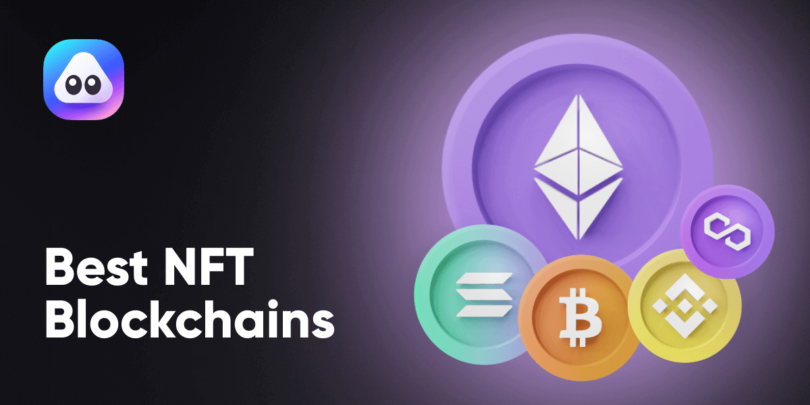Not all blockchains are the same when it comes to NFTs. Ethereum remains the dominant choice because of its established network and compatibility with most marketplaces. However, alternatives like Solana and Binance Smart Chain offer lower transaction fees and faster processing times.
Top NFT Marketplace Platforms for Creators and Collectors
Choosing the right platform is essential to your NFT success. Here are some of the most popular NFT marketplaces today:
OpenSea: The Largest NFT Marketplace
OpenSea is a go-to marketplace for creators and collectors alike. Known for its wide variety of NFTs, including art, music, and domain names, OpenSea makes it easy for creators to mint and sell NFTs.
Rarible: A Decentralized Marketplace for Creators
Rarible is unique because it’s community-owned, meaning that creators and collectors can participate in decision-making for the platform. It also offers a range of NFT types, from digital art to virtual worlds.
ALSO SEE: A Guide to Data and Cloud Migration Software
SuperRare: Exclusivity and High-Quality Art
If you’re looking for exclusive and high-quality art, SuperRare is the place to be. This platform focuses on selling limited-edition digital art pieces from well-known and up-and-coming artists.
Foundation: Supporting Independent Artists
Foundation has grown into a popular platform where independent creators showcase their work. It’s a more curated experience compared to OpenSea or , but this exclusivity often attracts serious collectors.
What to Consider When Choosing an NFT Marketplace
When picking a marketplace, consider these factors:
1. Transaction Fees: Some platforms charge higher fees for minting and selling NFTs. Ethereum-based platforms typically have higher gas fees.
2. Market Size: Bigger platforms like OpenSea have more visibility, but smaller platforms can offer niche communities.
3. User Experience: User-friendly platforms make it easier to mint and sell NFTs, especially if you’re new to the space.
4. Royalties: Some platforms allow you to earn a percentage every time your NFT is resold, while others do not.
How to Sell NFTs: Maximizing Your Success
After creating your NFT, the next step is to list it for sale. Here are a few tips to help you sell your NFT quickly and for the best price:
1. Set a Reasonable Price: While it’s tempting to list your NFT for a high price, starting with a reasonable amount can attract more buyers.
2. Promote Your NFT: Use social media platforms like Twitter, Discord, and Instagram to build hype around your NFT.
3. Engage with the Community: Joining NFT communities can help you gain insights and find potential buyers.
4. Be Transparent: Share your creative process and the story behind your NFT. Buyers are more likely to invest in a piece with a strong backstory.
The Role of Gas Fees in NFT Transactions
When minting or selling an NFT, you will encounter gas fees—especially on Ethereum. These are transaction fees paid to network miners for processing your transaction. Gas fees fluctuate based on network demand, so it’s wise to mint your NFTs during off-peak hours to save costs.
How Royalties Work in NFTs: Long-Term Benefits for Creators
One of the most exciting aspects of NFTs for creators is the ability to earn royalties. When you sell your NFT, you can program it to give you a percentage of future sales. This means that if your work increases in value over time, you’ll continue to profit from it.
NFTs and Intellectual Property: What You Need to Know
Owning an NFT does not always mean owning the copyright to the underlying digital asset. If you’re creating or buying NFTs, it’s essential to understand the legal aspects of intellectual property. Ensure you’re aware of whether the artist retains the copyright or if it transfers to the buyer.
Tips for Creating High-Value NFTs
To make your NFT stand out in a crowded marketplace, focus on these strategies:
1. Originality: Unique and original content is more likely to grab attention.
2. Quality: High-resolution images, detailed artwork, or well-produced music will appeal to collectors.
3. Storytelling: NFTs that come with a story or background have a better chance of connecting emotionally with buyers.
The Future of NFT Marketplaces: What to Expect
The NFT space is still young, and changes are inevitable. As blockchain technology evolves, we can expect marketplaces to become more user-friendly, with lower fees and more diverse offerings. Additionally, as more creators and brands adopt NFTs, the market will likely grow exponentially, opening new opportunities for both creators and collectors.
Are NFTs Here to Stay? Long-Term Potential in Digital Collectibles
While some see NFTs as a passing trend, others believe they represent the future of digital ownership and collectibles. The ability to verify ownership and scarcity in a digital world is revolutionary, especially as we move toward more virtual environments like the metaverse.
Conclusion
Whether you’re a digital artist looking to sell your work or a collector seeking unique assets, NFTs offer endless possibilities. With the right marketplace, a solid strategy, and a passion for creativity, the NFT space is yours to explore. Now that you know how to create NFTs and navigate the leading marketplace platforms, it’s time to get started!
FAQs
1. Can I create an NFT for free? Yes, some platforms like OpenSea offer “lazy minting,” which allows you to create NFTs without paying gas fees upfront.
2. Which blockchain is best for NFTs? Ethereum is the most popular choice due to its established network, but alternatives like Solana and Binance Smart Chain are gaining popularity.
3. How much does it cost to mint an NFT? The cost varies based on the platform and blockchain. On Ethereum, gas fees can fluctuate, making minting more expensive during high-traffic periods.
4. Do I need coding skills to create an NFT? No, most NFT marketplaces have user-friendly interfaces that allow you to create NFTs without any coding knowledge.
5. What is the future of NFTs? The future looks bright for NFTs, with continued growth in digital art, gaming, and virtual real estate. As technology evolves, NFTs will likely play a larger role in the digital economy.






